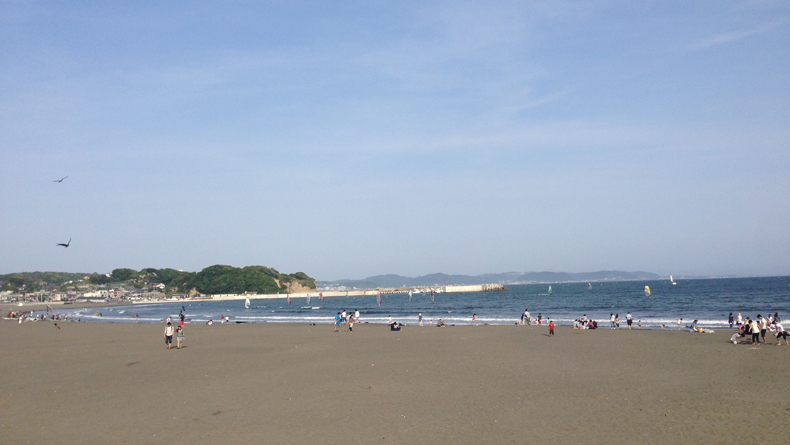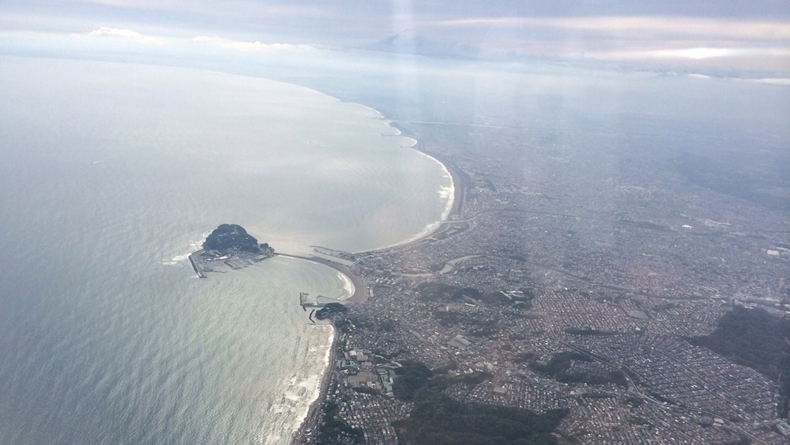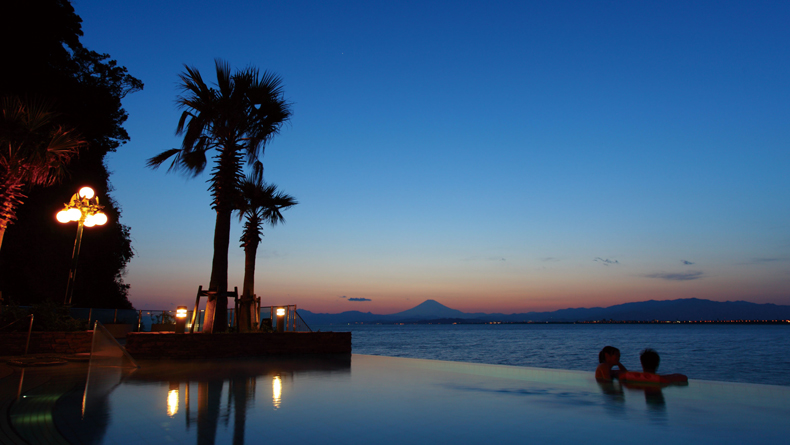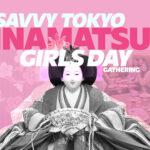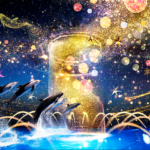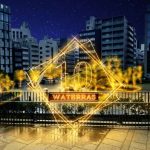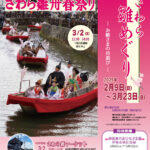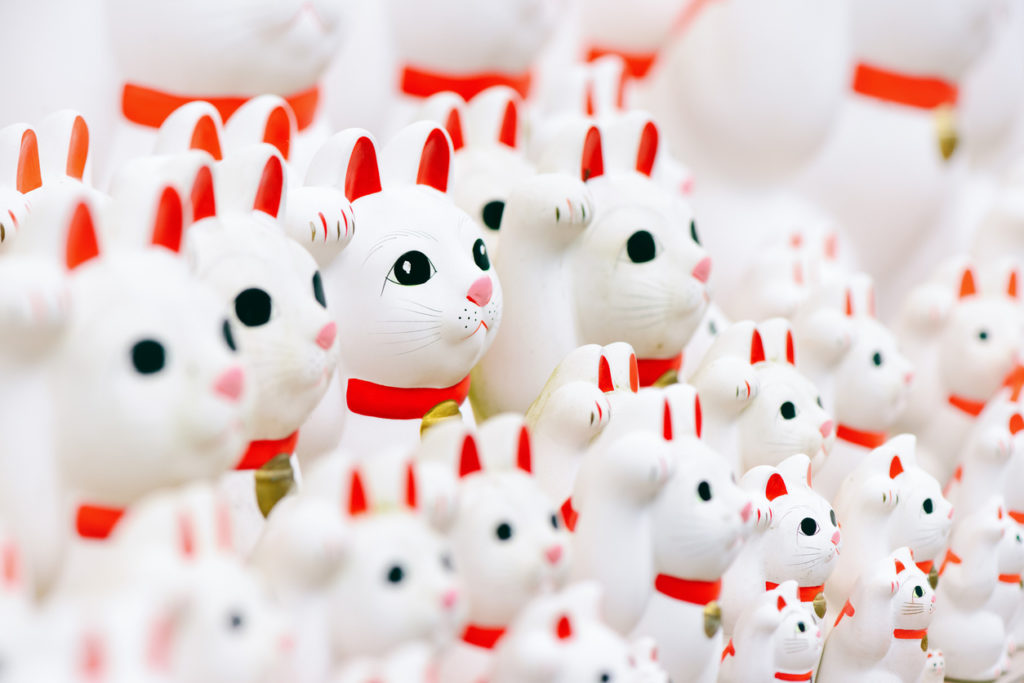Enoshima: Sun, Sea and Sanctuary
At the center of the Shonan resort area lies Enoshima, a popular seaside destination to which locals and visitors alike flock in the summer months. Its sandy beaches—some of the closest to Tokyo and Yokohama—and, ahem, clear waters are perfect for swimming, surfing, jet-skiing, and windsurfing, and offer a cool respite from the fierce summer sun.
Located along the coast of Sagami Bay, the seaside town can be reached in just over an hour from central Tokyo, or a short train ride from Kamakura. It is served by three train and monorail lines, each of which has a separate station: Enoden (Enoshima Station), Odakyu Railways (Katase Enoshima Station), and the Shonan Monorail (Shonan Enoshima Station). The mainland is connected to Enoshima Island by the Enoshima-ohashi Bridge. To get to the island, where most of the attractions can be found, walk a few minutes southwest from Katase-Enoshima Station and cross the 600-meter-long bridge.
Perfect for a one-day summer getaway, Enoshima offers an array of activities for the young and old, and for those with lots of energy or who are looking for a bit of relaxation away from the bright city lights. Having visited the island a few times now, I always seem to find something new to do on each visit. While a pleasant day out, it can get very crowded, especially on weekends, so plan your trip with this in mind.
Legend has it that Benzaiten, the Japanese Buddhist goddess of music and entertainment, is enshrined on the island. Enoshima is therefore dedicated to the goddess, who is said to have caused it to rise from the bottom of the sea in the sixth century.
The first point of interest worth a visit is Enoshima Shrine. Look out for the red torii gate at the top of the shopping street that signals the entrance. Warning: it is a bit of a steep climb to reach the shrines and other attractions housed on-site, although escalators are available for a small fee. The main shrine actually consists of three separate shrines, and Hetsu-no-miya Jinja (Shrine at the Edge) is the first to be reached after passing through the main entrance gate. Built in 1206 by the third Kamakura Shogun, Sanetomo Minamoto, it is dedicated to the Shinto Goddess Tagitsuhime. Here, a statue of a naked Benzaiten can be found—a rare state for the Shinto deity.
Next, you will come across Nakatsu-no-miya Jinja (Shrine at the Middle)—the oldest of the three shrines. Erected in the year 853 by the Buddhist priest En-nin, this crimson monument is an early example of the Japanese tendency to merge Shintoism and Buddhism. Okutsu-no-miya Jinja (Shrine of the Deep), located closest to the sea, has a ceiling decorated with a painting of the giant turtle Happo Nirami no Kame, whose eyes seem to follow you as you walk around. Creepy.
Visit the Samuel Cocking Garden, including a 60-meter-high observation tower and lighthouse, for breathtaking views of the ocean and surrounding area. In 1880, most of the land on Enoshima Island was purchased by British merchant Samuel Cocking, who developed a power plant and botanical gardens there. Located just past the third shrine, the garden attracts over half a million visitors each year. An admission fee of ¥500 is required to enter the garden and tower (¥200 for just the garden), but it is well worth it.
At the end of a short trail on the other side of the garden stands the Love Bell. According to local legend, for luck in love, couples should ring the bell together and write their names on locks that are left attached to the fence. Don’t believe in luck? Pay the site a visit for the great views over the ocean.
For just ¥500 admission fee, you can walk inside the Iwaya Caves that are tucked into the cliffs of Enoshima’s southern coast. Created by about 6,000 years of sea erosion, the two caves are accessible via a staircase carved in stone. Scared of the dark? Don’t be; the caves are well-lit and a candle is even included on payment of the entrance fee. An easy walk, the first cave (152 meters long) contains Buddhist statues, while the second tunnel (56 meters long) is dedicated to the Dragon God, who is believed to be the protector of the fishermen. (Please note: the caves are closed until July 6, 2014 due to ongoing renovations.)
Although I haven’t visited (yet), the Enoshima Aquarium on the mainland sounds like a real treat. Take the kids to see the dolphin show, or visit the penguins and seals for an aquatic learning experience. The unique jellyfish show, with lights and sounds, is the only one in the world—a reason in itself to go. The touch pools offer an interactive experience for the little ones to learn more about the creatures that live on Enoshima beach or in the waters of Sagami Bay. Entrance fees are ¥2,100 for adults and ¥600 to ¥1,500 for children, depending on their age.
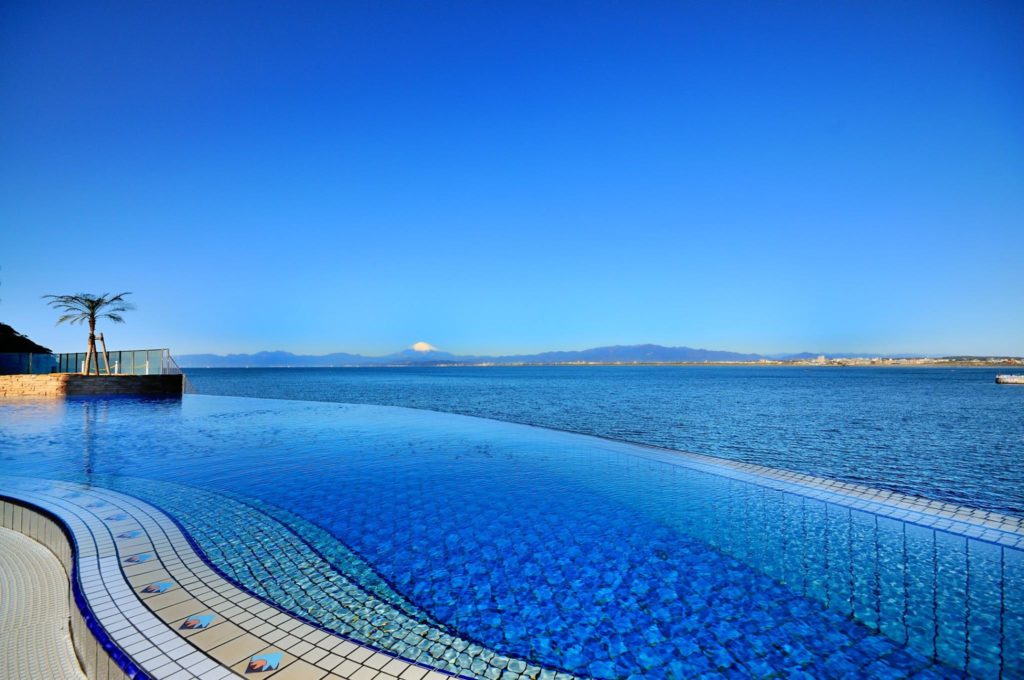
However, for me, there is only one real reason to visit Enoshima: the Enoshima Island Spa (Enospa). Having visited countless times when Tokyo living gets a bit much, I can confidently say that this hot spring rejuvenation center is a real diamond in the rough. With a total of 10 outdoor and indoor pool areas, as well as a bath area, spa, cafe, and restaurant, Enospa is a relaxation retreat. Built along the shore of Enoshima Island, some of the pools directly overlook the ocean and, if you’re lucky, Mt. Fuji can be glimpsed on a clear day.
Rejuvenate your body and mind with an indulgent treatment from the on-site Beng Teng Spa. Prices range from a very decent ¥7,700 for a 40-minute facial to more expensive full-body courses.
The spa is open from 10 a.m. to 10 p.m. every day, and entrance fees are very reasonable: ¥3,120 for adults and ¥1,512 for children over six years old. Had a hectic day? Watch the sunset from the warm waters of the outdoor pools during the night spa (7–10 p.m.). Much cheaper than the all-day option, at ¥1,932 for adults and ¥1,296 for kids, this is one of my favorite ways to spend a quiet evening away from the stresses and strains of the city. For those looking for (more) peace and quiet, consider visiting on Sundays, when children are not allowed entry.
Don’t worry if you have forgotten your bathing suit; a range of outfits are available to rent. However, if you’re a fashionista, you may want to bring your own. Something else to note: a no-tattoo policy is strictly enforced.
To end a day at the seaside, eat at one of the seafood restaurants lining the seashore. Look out for shirasu (small white fish) that are ubiquitous to the area, and are served in a variety of dishes, including donburi (rice bowls).
The Deets
Getting there: From Shinjuku Station, take an Odakyu express or rapid express to Fujisawa Station (70 min., ¥630). Transfer to a local train to Katase Enoshima Station. The Enoshima Kamakura Free Pass (¥1,470) includes a round-trip ticket between Shinjuku and Fujisawa and unlimited use of Enoden trains between Fujisawa and Kamakura and Odakyu trains between Fujisawa and Enoshima for one day. You can also choose to take the JR Tokaido Line from Tokyo Station or the JR Shonan-Shinjuku Line from Shinjuku Station to Fujisawa Station (50 min., ¥970) and transfer to the Enoden (10 min, ¥220) or Odakyu Railway (7 min, ¥160) for Enoshima Station. The one-day Kamakura Enoshima Pass (¥700) offers unlimited use of the Enoden and Shonan Monorail, and JR trains between Fujisawa, Ofuna and Kamakura.
More info: For further information, please visit the websites of Enoshima Aquarium and Enoshima Island Spa.

